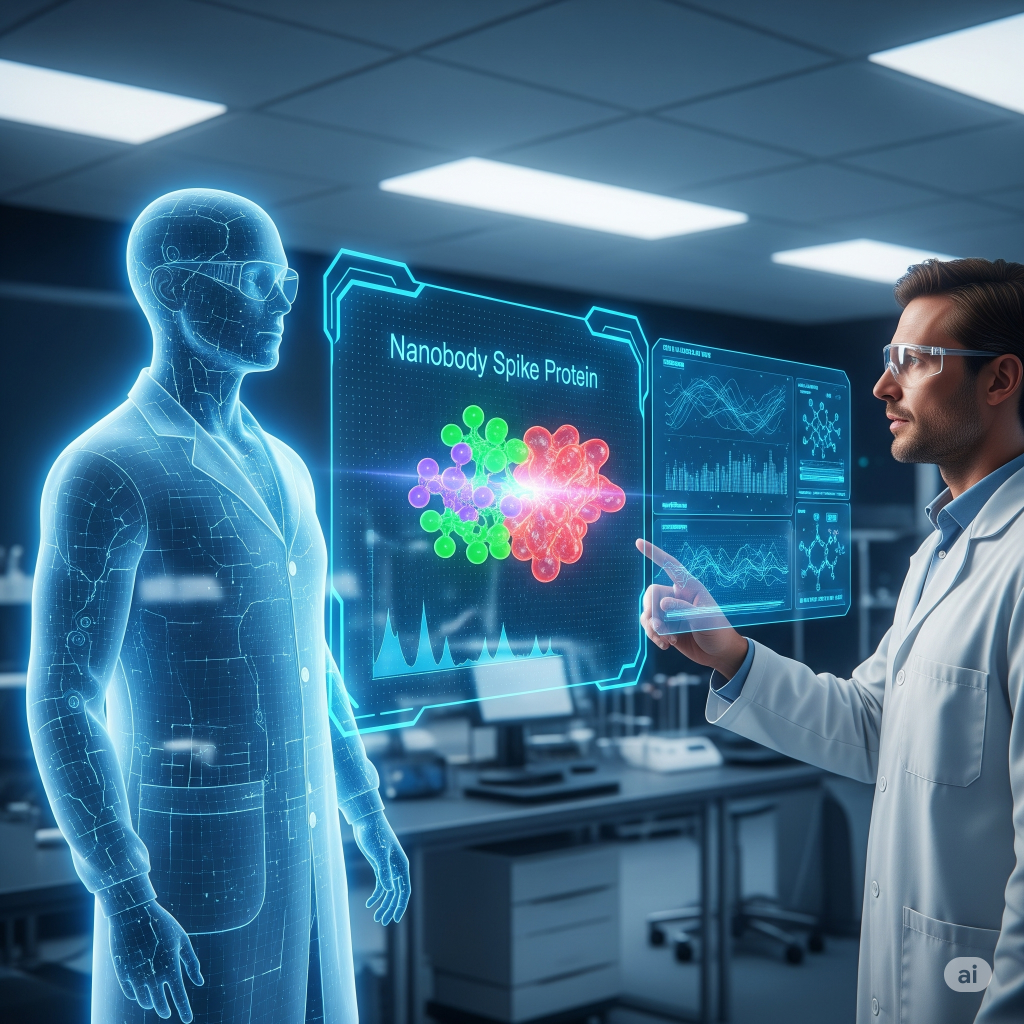In a groundbreaking development that redefines how we think about drug discovery, researchers at Stanford University have unveiled an artificial intelligence system capable of designing new antibodies for COVID-19 entirely within a virtual laboratory. What’s remarkable is not just the result—but how it was achieved: AI models, working autonomously, generated nanobody candidates faster and more creatively than traditional human-led methods.
This milestone demonstrates a radical shift in how we approach biotechnology, vaccine development, and future pandemics.
From Lab Benches to Silicon Labs
Traditional antibody development is time-consuming and resource-intensive. It typically involves growing live cells, extracting proteins, and testing them in physical lab environments—a process that can take months, sometimes years.
The team at Stanford set out to challenge that model using what they call a “virtual wet lab”: a fully simulated environment where AI “scientists” test hypotheses, run experiments, and refine molecular structures—without ever touching a pipette.
Their focus: nanobodies, which are smaller, more stable alternatives to traditional antibodies. Due to their compact size and ease of manufacturing, nanobodies are ideal for rapid therapeutic development and delivery.

What the AI Did Differently
Using large-scale datasets of known antibody-antigen interactions, the AI was trained to predict how new nanobody structures would bind to the spike protein of SARS-CoV-2. The system ran thousands of simulations in parallel, iterating toward optimal designs.
The result: a newly engineered nanobody that effectively neutralized key variants of the COVID-19 virus in lab conditions.
What sets this apart from other AI-assisted biotech is the degree of autonomy. While many AI systems assist researchers by analyzing data or generating leads, this virtual lab worked end-to-end—from design to prediction—before a human even validated the final result.
Why This Breakthrough Matters
- Speed: The AI reduced the discovery timeline from months to weeks. In pandemic scenarios, that time difference could save thousands of lives.
- Scalability: Virtual labs don’t rely on limited lab space or material resources. They can scale almost infinitely with cloud computing power.
- Creativity: Unlike humans, AI is not constrained by intuition or prior experience. It explores combinations and molecular structures that researchers might never consider.
Implications Beyond COVID
While the focus of this project was on SARS-CoV-2, the implications are far broader. The same methodology could accelerate treatments for:
- Emerging viruses (e.g., new influenza strains or novel coronaviruses)
- Cancer immunotherapy
- Autoimmune diseases
- Drug-resistant bacterial infections
As more pharmaceutical companies explore AI-driven research, the virtual lab model could become a standard part of the drug discovery pipeline.
Ethical and Scientific Considerations
Despite the excitement, this breakthrough raises important questions:
- Validation: How do we ensure that AI-generated molecules are safe and effective across different populations?
- Accountability: If an AI creates a flawed treatment, who is responsible—developers, regulators, or the AI?
- Transparency: Researchers must be able to interpret AI decisions to ensure scientific integrity.
Fortunately, the Stanford team emphasizes human oversight and rigorous validation of all AI-suggested molecules before any clinical use.
A Glimpse into the Future of Medicine
This isn’t just a story about COVID-19. It’s a story about how medicine is changing at its very core. Artificial intelligence is no longer just a tool in the lab—it is the lab. And it’s reshaping how we define innovation, creativity, and speed in the world of science.
Virtual labs staffed by AI are already outperforming traditional models in early-phase discovery. The challenge now lies in integration: ensuring these tools are trustworthy, ethical, and part of a human-AI partnership that accelerates—not replaces—scientific discovery.
If the early success of Stanford’s nanobody experiment is any indication, the next great medical breakthrough might come not from a person in a lab coat—but from an algorithm in the cloud.

Leave a Reply